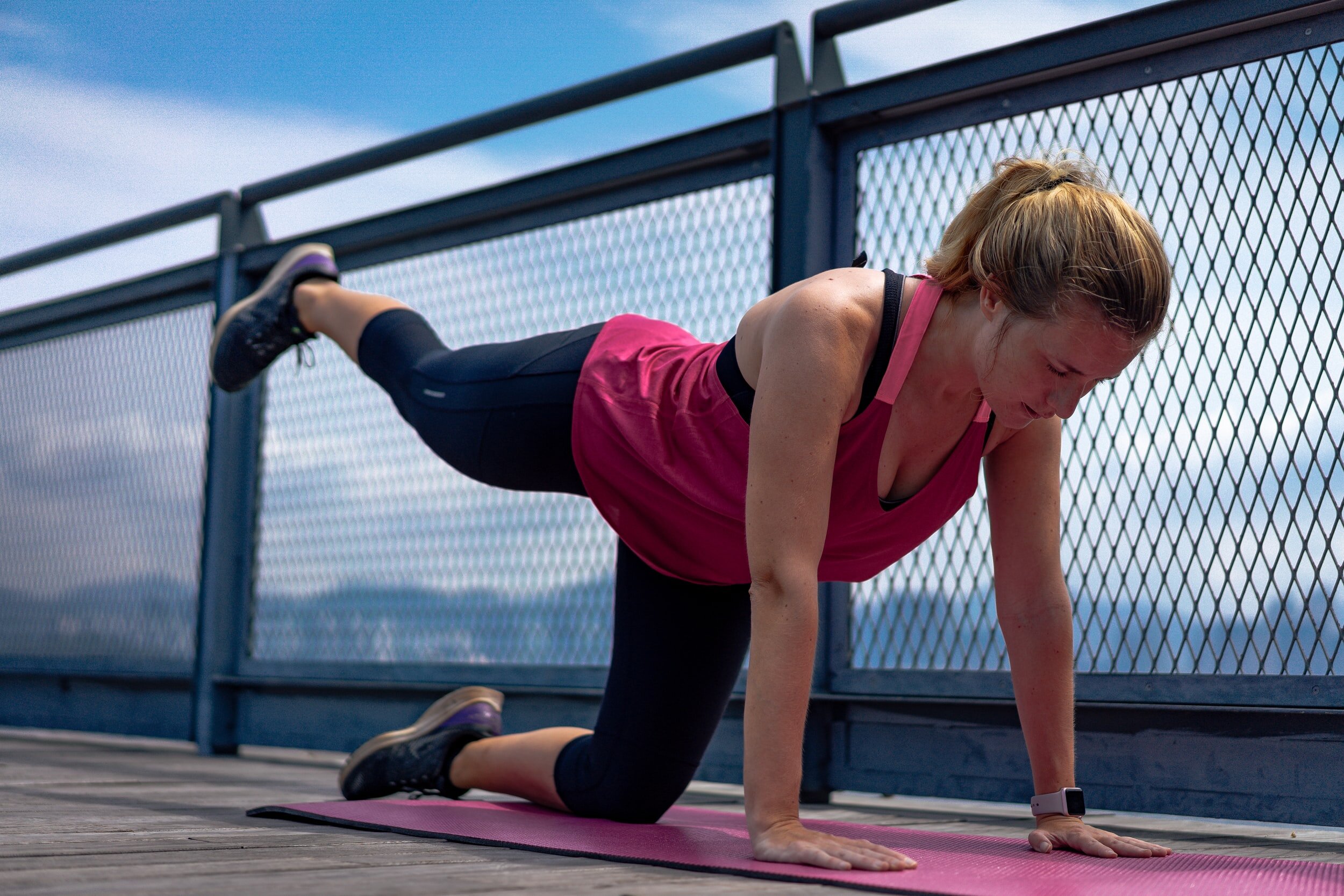
Injuries can be self-managed to help improve pain, mobility, strength, and overall function.
The following resources provide education and information on common injuries. Download to learn self-management techniques for addressing pain, mobility, strength, and overall function.
Brochures
These brochures can be used as a guide to progress through each stage of recovery, to get you back to doing what you love!
Each brochure contains information on:
Cause of the Injury
Signs and Symptoms
Relevant Anatomy
Self-management techniques
Below is a sample brochure, scroll down to access the downloadable PDF for your injury.
Posters
These posters can be used as a guide to progress through each stage of recovery, to get you back to doing what you love!
Each poster contains information on:
Cause of the Injury
Signs and Symptoms
Relevant Anatomy
Self-management techniques
Below is a sample poster, scroll down to access the downloadable PDF for your specific injury.
Temporomandibular Joint Dysfunction (TMD)
TMD can cause pain, headaches, difficulty chewing, and clicking/popping. Causes can include direct injury, disc dysfunction, clenching, grinding, and arthritis.
Low Back Pain (LBP)
Low back pain can be caused by direct injury, or it can be non-specific, which means there is no known cause. 60-80% of people experience low back pain at some point in their life, and it can be acute (short term) or chronic (long term).
Rotator Cuff Injuries (Mobility is Affected)
Rotator cuff injuries can cause pain in the shoulder and upper arm, pain with overhead movements, disturbed sleep due to discomfort, or reduced mobility. It can be due to degenerative changes, traumatic injuries, or repetitive microtraumas. These resources are if you have a rotator cuff injury and your mobility is affected due to it.
Rotator Cuff Injuries (Mobility is Not Affected)
Rotator cuff injuries can cause pain in the shoulder and upper arm, pain with overhead movements, disturbed sleep due to discomfort, or reduced mobility. It can be due to degenerative changes, traumatic injuries, or repetitive microtraumas. These resources are if you have a rotator cuff injury and your mobility is not affected due to it.
Knee Osteoarthritis (OA)
Knee osteoarthritis results from wear and tear and gradual loss of cartilage in the knee joint. It can cause pain, stiffness, reduced range of motion, and inability to perform certain tasks such as walking long distances or stairs.
Anterior Cruciate Ligament (ACL) Injury
The Anterior Cruciate Ligament (ACL) is a key stabilizing ligament in the knee, and it is commonly injured in activities that involve pivoting, twisting, and jumping. Depending on the grade of injury, symptoms include instability, pain, swelling, and altered function.
Medial Epicondylitis (Golfer’s Elbow)
Medial Epicondylitis involves inflammation of the wrist flexor tendons, typically as a result of repetitive motion. It causes pain on the inside of the elbow and forearm, and contrary to the name, majority of these injuries do not involve sport.
Plantar Fasciitis
Plantar fasciitis affects 10-15% of the population, and occurs most often with active individuals. It causes pain in the heel and bottom of foot, especially first thing in the morning and after prolonged sitting. >90% of plantar fasciitis cases can be treated conservatively.
Sciatica
Sciatica is a condition that can cause pain in the buttocks and/or legs, numbness, muscular weakness, sensory impairment, and other issues. Sciatica symptoms can be caused by various reasons, so it is important to be assessed to determine the cause and rule out other pathologies.
Groin Strain
Groin strains are a common injury in sports such as hockey and soccer, and can occur due to blunt trauma, microtrauma, or forceful contraction. Strains can vary in severity, but typically pain, swelling and tenderness will be present along the inside of the thigh.
Shin Splints (Medial Tibial Stress Syndrome)
Shin splints are characterized by pain along the front of the lower leg, and often occur after repetitive activity such as running.
Patellar Instability
Patellar instability occurs when the kneecap (patella) moves out of place in the groove of the femur. It can be as a result of direct trauma to the knee, previous knee injuries, or muscle strength.
Hip Osteoarthritis (OA)
Hip osteoarthritis (OA) is caused by the progressive loss of cartilage in the hip joint. It can lead to pain, stiffness and loss of function, including reduced ability to walk long distances and pain while doing activities.
Medial Collateral Ligament (MCL) Injury
The Medial Collateral Ligament (MCL) provides stability to the medial aspect of the knee, and it is most commonly injured from impact to the outside of the knee. Symptoms include pain, swelling, tenderness, instability, and altered function.
Lateral Epicondylitis (Tennis Elbow)
Lateral Epicondylitis involves inflammation of the wrist extensor tendons, typically as a result of repetitive motion. It causes pain on the outside of the elbow and forearm, and is more common than Medial Epicondylitis.
Primary & Secondary Headaches
Headaches fall under two categories, primary or secondary. Primary includes migraines and tension-types, and secondary headaches are due to underlying conditions such as trauma, infection, or disorders such as TMD.
Carpal Tunnel Syndrome
Carpal Tunnel Syndrome is the most common nerve entrapment syndrome, and causes pain, numbness and paresthesia in the hand and arm. It results due to increased pressure in the carpal tunnel, which is located in the wrist.
Inversion Ankle Sprains
Inversion ankle sprains are common injuries and are caused when the foot rolls inwards, causing damage to the ligaments of the outside of the ankle. They are also referred to as lateral ankle sprains and rolled ankles.
Bankart Lesion Brochure
A bankart lesion is damage to the front aspect of the labrum of the shoulder joint. This injury is common for those who participate in overhead sports and activities, such as volleyball and tennis.



